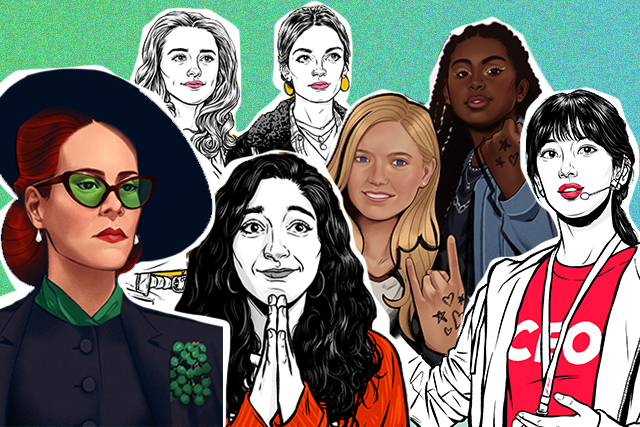
Sure, art (and art critique) is subjective. But if we recognize that the fundamentals of art theory are good benchmarks for analysis and interpretation, then it’s fair to say the same about sociopolitical commentary surrounding it. If it’s possible for art to be objectively good, then perhaps it’s also possible for it to be objectively harmful. Is positive women’s representation in art as subjective as it’s made out to be?
For Women’s Month, Netflix Philippines collaborated with local artists Cj de Silva-Ong and Betsy Cola to create illustrations of some of Netflix’s most iconic gals. From Beth Harmon of “The Queen’s Gambit” to Seo Dal-mi of “Start-Up,” the portraits have our favorite characters looking like they’re ready to take on anything. We got to know more about both illustrators and why they took on this project during our chat on objectification, Southeast Asian visibility in the media and their local influences.
Happy Women’s Month! This is an interesting collaboration. What’s the goal of this campaign?
Betsy: Happy Women’s Month! It is and I’m very honored to be a part of [it]. This month we’re celebrating women empowerment and stressing the importance of positive and diverse representation of women in media.
CJ: When the Netflix team approached me, they told me this collaboration was meant to celebrate a representation of women from around the world through the Netflix titles we know and love. I think they also wanted a female and Filipino perspective.
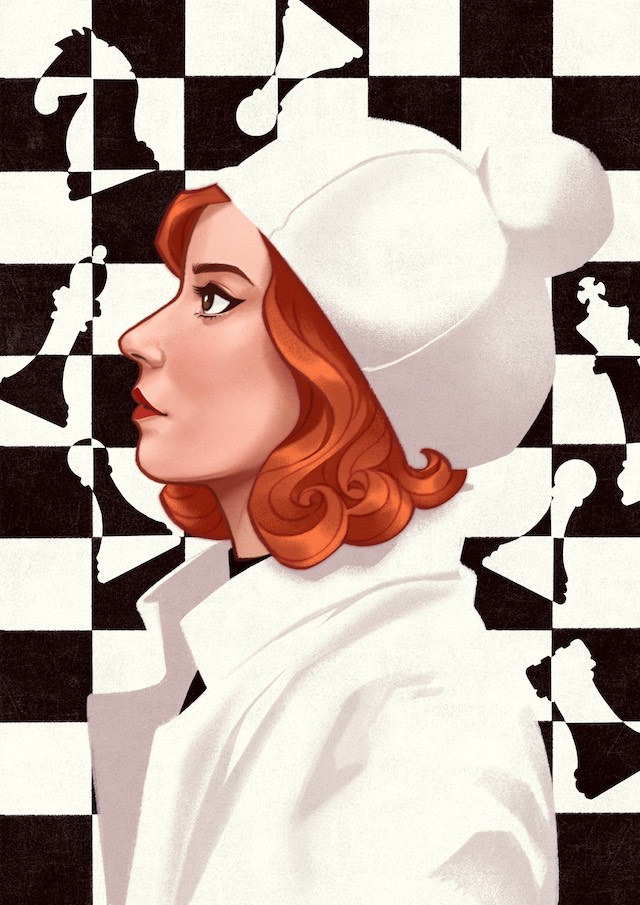
Among the Netflix icons you drew, who’s your favorite and why?
CJ: Maeve and Aimee from “Sex Education.” The detention and bus scenes from season two really affected me. Seeing different female characters realizing that the one thing they have in common was male abuse—that was powerful.
Betsy: I like all of the characters for different reasons, but I relate the most to Vivian from “Moxie.” I see a lot of my younger self in her character. I was around that age too when I started getting into Riot Grrrl music. I was also a shy and timid teen, so learning about women from the Riot Grrrl movement who weren’t afraid to be loud and disruptive in a male-dominated space was empowering. Since I went to conservative institutions, seeing Vivian and her friends banding together and standing up against toxic masculinity and sexism in their school was quite a cathartic experience!
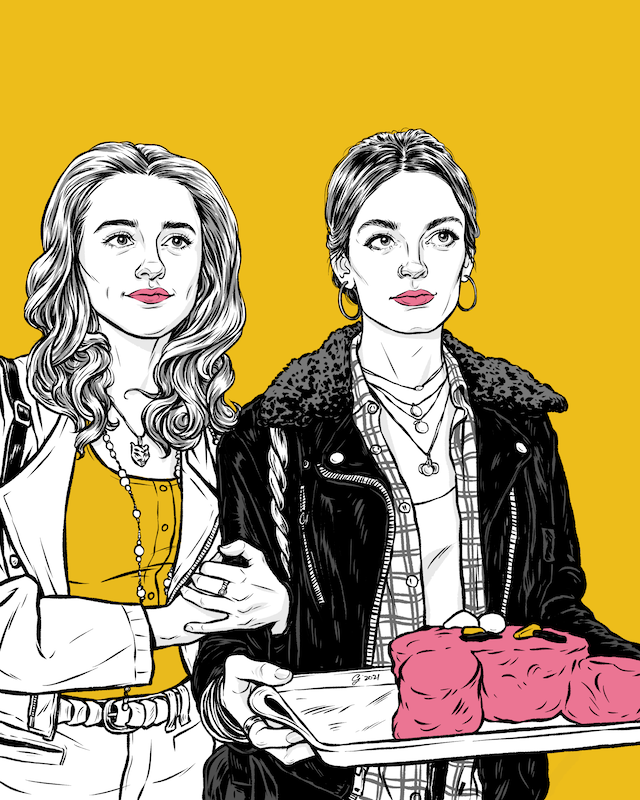
What sets good representations of women apart from objectification in art?
CJ: Physical diversity is more visible now. We get to see varied body shapes and sizes, heights, skin color, hair, etc. I wish [there were] more nuanced [post-colonial] cultural diversity and intersectionality in the pop culture we consume. I like it when women are represented as flawed humans and not as mere concepts—[seeing] a spectrum of emotions and motivations. [I like representation that isn’t] prescriptive and moralizing—when women have agency.
Betsy: I think it lies within the intent and purpose of the artist. Good women’s representation can be subjective. Even so, I believe it should always come from a place of respect for women’s autonomy and ownership over their own bodies.
How would you describe the visibility of empowered Southeast Asian women in media?
CJ: Women are more visible, definitely. But “the empowered woman” is still depicted as a rarity, as an achievement—as if power, for women, is a privilege or a “blessing.” Women still have to prove themselves all the time, exposing the still male-dictated view of success. I could say there’s “progress,” but subservience is still mainstream.
Betsy: There’s hardly any representation of people of Southeast Asian descent in mainstream media, much less that of Southeast Asian women specifically. Although there have been attempts to give visibility to Southeast Asian culture in recent years, the content that gets produced still falls short of actually being an authentic portrayal of the different cultures within Southeast Asia.
We don’t have to go far to look for representation. We can find it in homegrown content. For years, local independent artists have been making art, literature, zines and [comics] that are based on our own culture. By uplifting these works, we can propel them to an international platform, like the much-awaited [animated adaptation of] “Trese.”
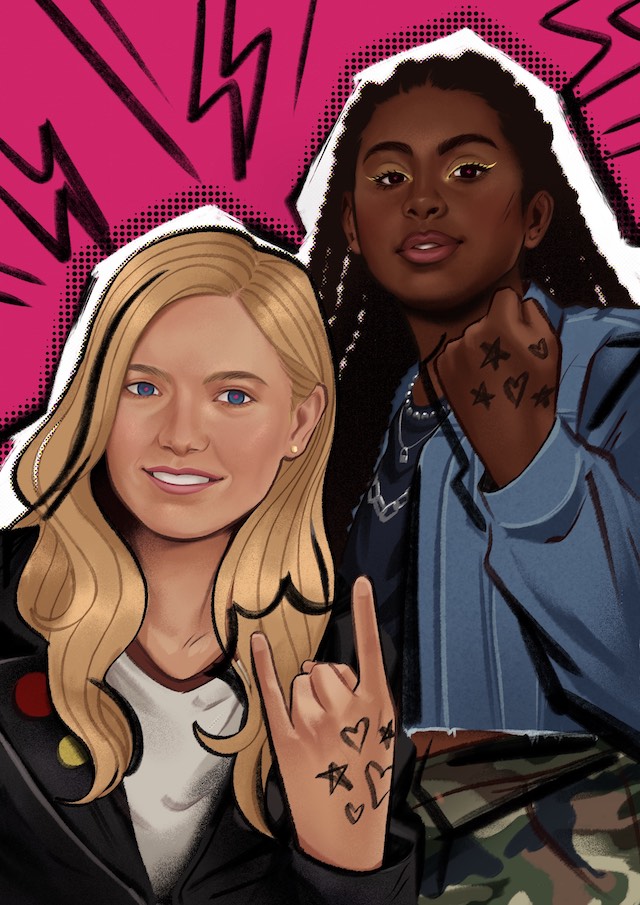
Who are your local art influences? Are there elements or themes that are distinctive in the Filipino art scene’s portrayal of women?
CJ: When I was younger, I looked up to painters such as Botong Francisco and BenCab. I also grew up reading my lolo’s Francisco Coching comics. I was drawn to their mastery of the human form as well as their composition, use of space and earthy color palettes. Now, I’m more into illustration, comics and graphic design.
I’ve always admired Cynthia Bauzon-Arre. I was in awe when I first saw her illustrations for Eraserheads’ “Fruitcake.” I love her current series featuring Philippine native flowers and plants! Through her art, more people (myself included) get to appreciate the beauty, diversity and abundance of our natural treasures. Hulyen [has a] visual style [that’s] clean and simple yet very expressive. [Her] work is so funny and relatable! She frames the introverted female middle-class experiences with biting self-aware humor. Darling Kink’s [works are] breathtaking and visceral. Her illustrations ooze with sensuality and pleasure. Her art celebrates the beauty of sex. Women are sexy but never objectified. I [also] love Betsy Cola’s retro-pop aesthetic. Her work is a visual celebration of the graphic styles of ’60s Mod, ’70s Psychedelia, ’80s kitsch and styles from the ’90s and the early 2000s as well.
I think the key themes nowadays are social activism and mental health.
Betsy: There are so many amazing Filipino artists that I look up to. If I had to name a few it would be Raxenne Maniquiz, Ev Yu, Kitty Jardenil and Donsuki. While their art styles are quite different from my own, they influence me in other ways. Their tenacity, attention to detail and passion for their craft are [qualities] I greatly admire and hope to apply to my own practice.
The Filipino art scene is very broad. I can only state my observation from the segment that I am familiar with, which is mainly the digital illustration side of it. The depiction of women in this portion of the art community is certainly diverse. Artists, especially the young ones, aren’t afraid to explore gender and femininity that goes beyond traditional expectations. They are motivated to create narratives and characters that reflect their own beliefs and experiences that mainstream media usually doesn’t care to depict.
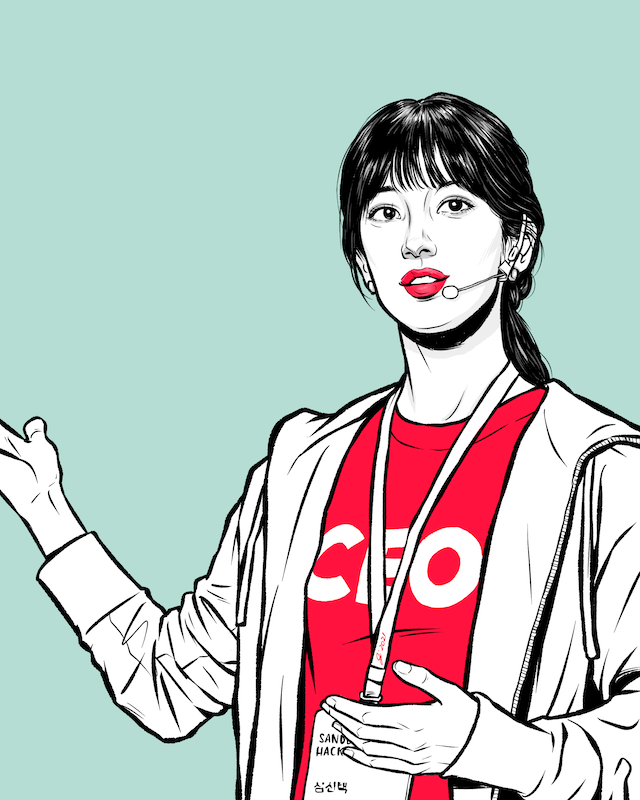
Any recommendations for folks who want to support more local artists?
Betsy: It’s really unfortunate that it isn’t possible to hold in-person art events and conventions [right now]. Those were really the best ways to discover and interact with local artists. Luckily, people can [still] find their next new favorite local artists just by simply checking out #artph on Instagram or Twitter. Penlab.ink also has a great collection of Pinoy komiks that can be read for free! Don’t forget to support them by liking and sharing their works. This can go a long way in helping artists get noticed for possible work and opportunities.
CJ: Buy their art. Give them the opportunity, the attention and the platform for their art to grow and thrive. If you like their art, you must give it value.
Art by CJ De Silva and Betsy Cola courtesy of Netflix
Header image by Neal Alday
Follow Preen on Facebook, Instagram, Twitter, YouTube and Viber
Related Stories:
Girl power or feminism? What’s the difference?
Which K-dramas reigned supreme in 2020? We’ve ranked them
The Filipina artists on our 2021 “I miss live gigs” playlist
A cheat sheet to the 15 Filipino films coming to Netflix

